Be yourself; Everyone else is already taken.
— Oscar Wilde.
This is the first post on my new blog. I’m just getting this new blog going, so stay tuned for more. Subscribe below to get notified when I post new updates.

Be yourself; Everyone else is already taken.
— Oscar Wilde.
This is the first post on my new blog. I’m just getting this new blog going, so stay tuned for more. Subscribe below to get notified when I post new updates.
Strengths
Areas for Development
Rosa, during this project you have really come into your own as a truthful and instinctive actor; and shown us that you are a strong performer in both dance and acting, which is fantastic. I’m so glad you have found the confidence to develop these skills, and take the challenge of Ismene on this project. Throughout rehearsals you have demonstrated openness, energy and commitment towards the rehearsal/devising process and your own character development, and worked hard collaboratively to develop your role and the production as a whole. It’s just a shame we haven’t been able to see the final performance. Your written work has improved a great deal towards the end of the project, and you’ve had the time to assess your rehearsal notes, and write your reflections. Both your research and reflections are evaluative, and knowledgeable with good links to practice and reputable sources, and you have provided good explanations of your understanding of this. Going forward I would like you to consider the level of depth you analyse these elements in, and in future projects we can look at ways of developing the level of critical analysis; so you can rigorously investigate a topic/topics and provide detailed and academic discourse on your findings, and how these impact your performance knowledge and development. Well done Rosa.

Considered among one of the most influential figures in the evolution of modern drama theory, Antonin Artaud associated himself with Surrealist writers, artists, and experimental theater groups in Paris during the 1920s.
After two years the Parisian Surrealists publicly rejected him and threw him out of their movement. He then founded the Theatre Alfred Jarry with Roger Vitrac and Robert Aron. Together they hoped to create a forum for works that would radically change French theater. Artaud, especially hated Western theater of plot and scripted language.
He became mostly known for his Theatre of Cruelty– an intense theatrical experience that combined elaborate props, magic tricks, special lighting, gestures and articulations with themes of rape, torture, and murder to shock the audience into confronting the evil side of life.
Lifelong mental health issues sent him repeatedly into asylums. He had his first mental breakdown at the age of 16 and having been prescribed opium to deal with it he developed a life long addiction.
Artaud’s own theatrical works were never highly regarded and were seen as less important than his theories. He was also a poet and these works are more highly regarded than his theatre.
He was particularly interested in Magic, Myth and Ritual and explored these themes in his surrealist work. He was aiming for a fusion of hallucination and fear through the vehicle of song, dance and pantomime…

http://www.youtube.com/watch?v=DK_vZuLYHcw
He defined and explained his Theatre of Cruelty as;

He felt that theare was too complacent and had fallen into a slump of easy watching of reflection on society. He particularly thought that the emphasis on plot and language- which had come from Aristotle- was all wrong. He wanted to shake up the audience in a ‘violent’ way.

His use of myth, magic, pageant, song, lighting, spectacle and dance without plot or language was intended to shock the audience into realising how bizarre and violent real life is.


He published The Theatre and its Double, a very influential book.

Although I find Artaud quite a shocking theatre maker I can see some links with our production of Antigone.
Artaud wanted the audience to be confronted by the violence of real life. We present some actual violence in the fight between Creon and Haemon in with Haemon dies. More generally, as Antigone is a violent play in its themes, it is a tragedy, you could see some links to Artaud’s theories.



However, I see that our piece is stylistically very different to what Artaud was interested in. Our play is totally dependant on plot and language which he hated. We could perform our play with no set or music or lighting and the meaning and content of the piece would still work. Artaud was trying to get rid of all plot and language and create a visual and sensual experience through stage trickery.
We have still made our play highly visual and incorporated physical and visual theatre, music, lighting, projections and set but the play still relies at its heart on the story.


Bertolt Brecht
The playwright Bertolt Brecht was born in 1898 in the German town of Augsburg. After serving as a medical orderly in the First World War and appalled by the effects of the war, he went first to Munich and then to Berlin in pursuit of a career in the theatre. That period of his life came to an end in 1933 when the Nazis came to power in Germany. Brecht fled and during this period the Nazis formally removed his citizenship, so he was a stateless citizen. https://www.bbc.co.uk/bitesize/guides/zwmvd2p/revision/1
His most acclaimed work is Mother Courage and Her Children. Although it’s set in the 1600s, the play is relevant to contemporary society and is often regarded as one of the finest anti-war plays. Fear and Misery of the Third Reich is Brecht’s most overtly anti-fascist play. This work analyses the way the Nazis came to power.
Epic theatre and Brecht
Bertolt Brecht’s ideas are very influential. He wanted to make the audience think, and used a range of devices to remind them that they were watching theatre and not real life.
He made and shaped theatre in a way that had a huge impact upon its development. Many of his ideas were so revolutionary that they changed the theatrical landscape forever. Modern theatre owes a lot to his methods.

When naturalistic theatre was at its height and acted as a mirror to what was happening in society, he decided to use it as a force for change. He wanted to make his audience think and famously said that theatre audiences at that time “hang up their brains with their hats in the cloakroom”.
Epic theatre (Brechtian theatre) breaks the fourth wall, the imaginary wall between the actors and audience which keeps them as observers. They are active members of the theatrical experience as they are kept thinking throughout, not switching off.

There are different methods to create the V effect. They are;
Narration
Narration is used to remind the audience that what they’re watching is a presentation of a story.
Coming out of role/ third person narration
Commenting upon a character as an actor is a clear way of reminding the audience of theatricality.
Direct address
Speaking directly to the audience breaks the fourth wall and destroys any illusion of reality.
Holding up a sign or placard
A placard is a sign or additional piece of written information presented onstage. For example, a married couple are arguing and the wife is very upset. If the actress held up a placard saying ‘I’m miserable’ that wouldn’t tell us anything about the character that we didn’t already know. However, if her placard said ‘I’m having an affair’ or ‘I’ve never loved him’ the audience would be forced to consider other aspects of their relationship and to think about deeper reasons behind her tears.
Global Shakespeares website explains what Verfremdungseffekt is https://globalshakespeares.mit.edu/glossary/distancing-effect/
Distancing effect (Brechtian Verfremdungseffekt): The distancing effect is a technique used in theater and cinema that prevents the audience from losing itself completely in the narrative, instead making it a conscious critical observer. The actor accomplishes this by directly addressing the audience, barring them from feeling empathy (film), interrupting the narrative (cinema), or drawing attention to the filmmaking or theatrical process.

I don’t think at this point we have any obvious examples of Verfremdungsefekt in our production of Antigone but I was thinking about how or where it might work. I could see it being interesting if the chorus left the stage to sit with the audience and watch the play unfold for a bit. For example, when the Fates are talking to Creon it could work if the chorus are observing this conversation along with the audience. If the chorus are also watching it gives even more importance to the moment on stage which emphasises the moral debate on stage and reminds the audience they are watching a play.

Mother Courage is a role that many experienced actors hope to play in their career. It follows the fortunes of Anna Fierling, nicknamed Mother Courage, a wily canteen woman with the Swedish Army, who is determined to make her living from the war. Over the course of the play, she loses all three of her children, Schweizerkas, Eilif, and Kattrin, to the very war from which she tried to profit.

The role is an epic one with the lead character needing to draw on years of experience to be able to deliver the depth and variety of the role.
Forced Entertainment are a contemporary theatre collective that often use the device of signs and placards. Brecht is still relevant in the making of new theatre today.



The images above show Director Tim Etchells and the company using the device of placards.

The theatre of Ancient Greece flourished between 550 BC and 220 BC. A festival honouring the god Dionysus was held in Athens, out of which three dramatic genres emerged: tragedy, comedy and the satyr play.
We know a lot about this era of theatre because there are 30 existing Greek tragedy texts and 14 Comedy texts existing as well as many paintings and remains of theatres in ruined form.
The Greeks were a very competitive nation ( they began the Olympic games!) and so playwrites would compete against each other ( sponsored by a rich man) to create plays that were then voted on and if yours won then you had your name engraved on the wall of the theatre and were forever remembered in glory.
It was established that there were 4 main playwrites that were the best. 3 were tragedy writers and one was comedic.
This link shows a National Theatre short film about Greek Theatre.
www.youtube.com/watch?time_continue=283&v=aSRLK7SogvE&feature=emb_title

The three tragedy writers were citizens of Athens and were;



Sophocles wrote Antigone around 442 BC.
Greek Tragedy looks at SUFFERING and HUMAN TRAGEDY directly in the face and the reason why the plays are still performed today is that their themes are Universal and timeless. We still suffer the same tragedies today. People are suffering when they don’t deserve to:

Studies have shown that there is a formula to a Greek tragedy. The main character or hero is good but is never so perfect that you can’t relate to them. They are trying to be good but make mistakes. Creon is trying to be a good King of Thebes but makes lots of mistakes.

A modern example of a Hamartia or a ‘fatal flaw’ is Lance Armstrong. He has been stripped of his World Class titles and banned for life from pro cycling because of his massive use of performance-enhancing drugs but people say that it was his EGO that was to blame for his downfall. His EGO was his Hamartia.

Death is a central theme in all Greek tragedies. Either that the characters within the play die or that the characters are fearful of or obsessed with death in some way.
The structure of Greek tragedy was very clever in that they developed a way to have the plot take place in the course of one day.
Arthur Miller, the American playwrite was seen to have been an artist working closely to the structure of a Greek Tragedy. Death of a Salesman follows the structure closely.

Professor Edith Hall on the National Theatre videos also talks about how modern Soap Opera’s also copy the structures and themes of Greek tragedy; such as conflicting brothers, tragic family events, sudden deaths, affairs etc. and which is all set in the community with lots of community reactions. There are shared experiences. At the end of a soap opera or Greek tragedy the audience is meant to come out drained and moved but also cleansed in some way by having faced the tragedy.



This National Theatre video explores the central conflict within Antigone; Creon’s belief in State weighed against the actions of his family.


Staging
The Olivier Theatre at the National in London has been built to the design of the traditional Greek Theatre

The staging of Greek Theatre would be circular with a horseshoe shaped tiered seating area. The stage area therefore extends into the audience as the audience wrap around the stage. This makes the theatre experience quite intimate and can be experienced as an ‘in the round’ feel.

Masks
An important feature of Greek Theatre was the use of masks. They wore masks because theatre was a religious ritual and that was the way it was always done. It was also useful because it enabled you to change character in the piece. Traditionally only 3 performers performed the main speaking roles in the plays so the actors could transform with the use of a new mask and hair.



The chorus

The chorus in thes plays can be quite a hard concept more modern audiences to undertand but it is important to know that Greek Theatre grew out of a tradition of choral song and dance. Traditionally there would always have been 12 men playing the chorus.
The chorus performs 2 roles. Firstly it is just good fun and an exciting part of the play which the audience enjoyed. This is much like a modern musical ensemble scenes. They can often been the highlight of the piece, rather than a boring interlude between the actors and the plot.

The other really important role of the chorus was to provide the perspective of the community having a view on the action. For example, we don’t just ger Creon and Antigone fighting but we get the perspective of all the citizens of Thebes represented as the chorus of 12. This makes Greek theatre fundamentally political and engaging for the audience and is often thought to be missing from much modern theatre.
The chorus is there as a way to help the audience get really involved in the action. This National Theatre video explains more;
www.youtube.com/watch?time_continue=26&v=MlXi8LfKv-0&feature=emb_logo
The chorus also serve an important role in that they can flag up that the drama has moved to a new location or time. This meant that the Greek plays could be quite simple visually without lots of set changes.
Music; Greek Tragedies were as much musical as theatrical performances. Much of the text uttered by the Chorus, and some by individual characters as well, was sung. The ancient tragedians were as much composers as writers, creating both the texts and the musical settings. Our production of Antigone has a strong use of music and singing.
Personal reflection
This background research on Greek Tragedies has helped put our play into a perspective with other plays both modern and ancient that I can relate to. I can see a bit more clearly that the themes are timeless and so I can see that even though it is an ancient play it has a relevance even today and it is important to keep performing it.
You can even see similarities in themes in the way that Global leaders have dealt with the coronavirus pandemic.
Oedipus the King, also by Sophocles, is a play about leadership, about authority’s response to a crisis. How Oedipus acts has a comparison with President Trump’s actions, or lack of, in a similar situation.
The Washington Examiner says;
Like the President, Oedipus has quite the ego. He introduces himself as “Oedipus whom all men call the Great,” and he pats himself on the back for solving the riddle of the Sphinx “by my wit alone.” Oedipus doesn’t go so far as to say he’s a “very stable genius,” but he comes close.
I can see how Greek tragedy is very current. Oedipus the King—also starts with a plague.
If we do get back to college after the lockdown to perform Antigone then I think I will bring a new perspective to my role and the play.
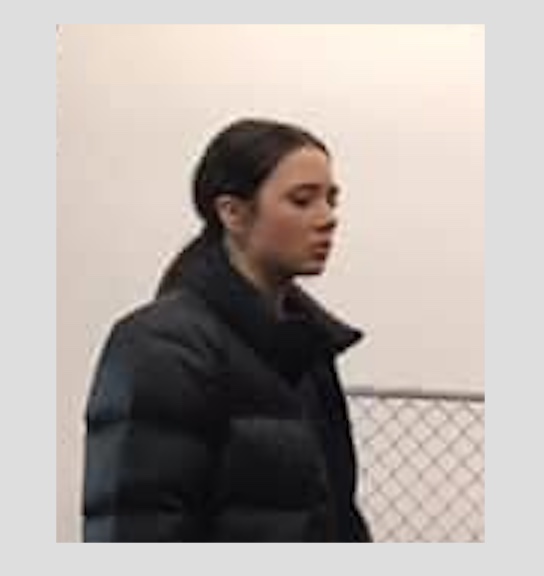
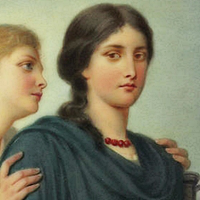
Ismene has a warm heart. She has a loving, gentle and innocent outlook on life and seeks to be the peacemaker at every turn. She hates pain and conflict so wishes calm and unity for everyone in her world. She is not naive about life but always wants to turn away from the dark side and make things better. Ismene is the younger sister of Antigone and the niece of Creon their King. Antigone is to marry Haemon, Creon’s son and therefore their cousin.
Ismene has a very strong moral compass, knowing right from wrong. She doesn’t want to get into trouble, as Antigone willingly does, but Ismene knows when to make a stand. She does not want to challenge the authority of Creon but when she knows morality is a stake then she will.
Further research on Ismene’s character finds ;
https://www.shmoop.com/study-guides/literature/antigone-sophocles/ismene
Like her sister, Ismene seems to value family ties and the laws of the gods over the laws of man. However, she’s just not gutsy enough to stand up for her beliefs. The courage to stand beside her sister does eventually come to Ismene. When Creon arrests both daughters of Oedipus, Ismene asks that she be executed alongside Antigone. Antigone, however, scorns Ismene’s belated attempt at righteousness.
The strong will of Antigone is often praised but if Antigone were a bit more like her sister, this wouldn’t be a tragedy at all. Ismene’s argument at the beginning of the play is that their family has suffered enough. What’s the point of bringing more sorrow? Ismene may be ‘weaker’ than Antigone but she wants her family to just live in peace.
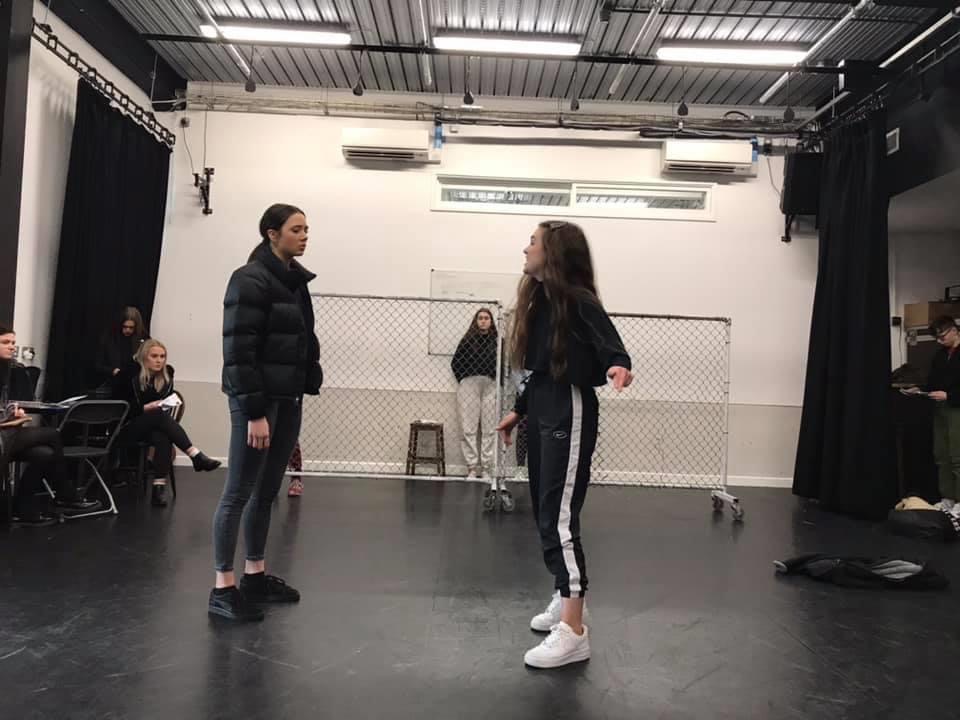
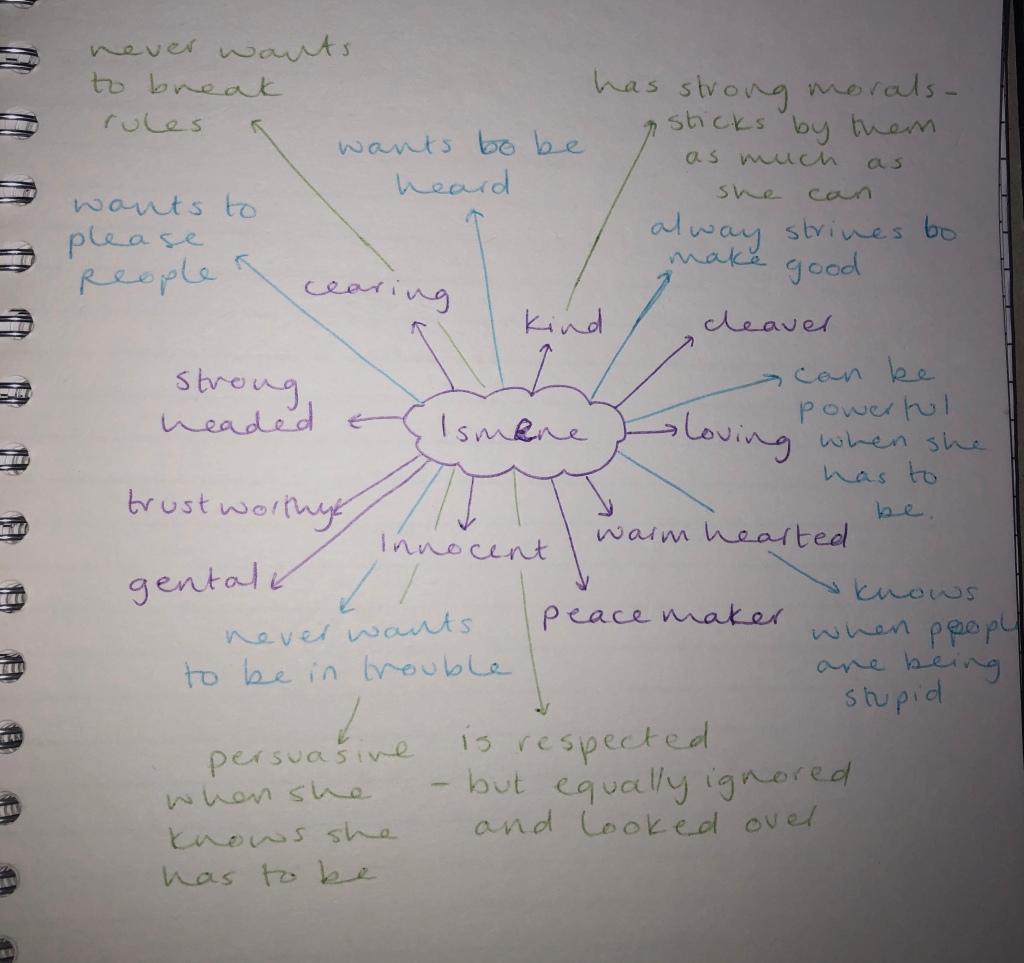
Process of character development
Once I had found my way into the character of Ismene by doing some initial research and brainstorming I had to apply my thoughts to the rehearsals which meant that I was seeing my character against the others in the play. Antigone ( Ella) and I have an intense on stage relationship and so it was clear that we had to work well together and be believable as the two sisters. There had to be a balance in our energy and dynamics so that we complemented each other. We had to find a balance between each character being different ( Antigone very strong, Ismene gentle) but each character also being present and clear and not overshadowed completely by the other one.
The characters and the strength of how we might play them came quite naturally to Ella and me which was great. We had a good chemistry which made working together easy and also made us gel well as the 2 sisters on stage. More of our discussions were about practical things like blocking, timing, connections with a look or a touch and any pauses we wanted to find.
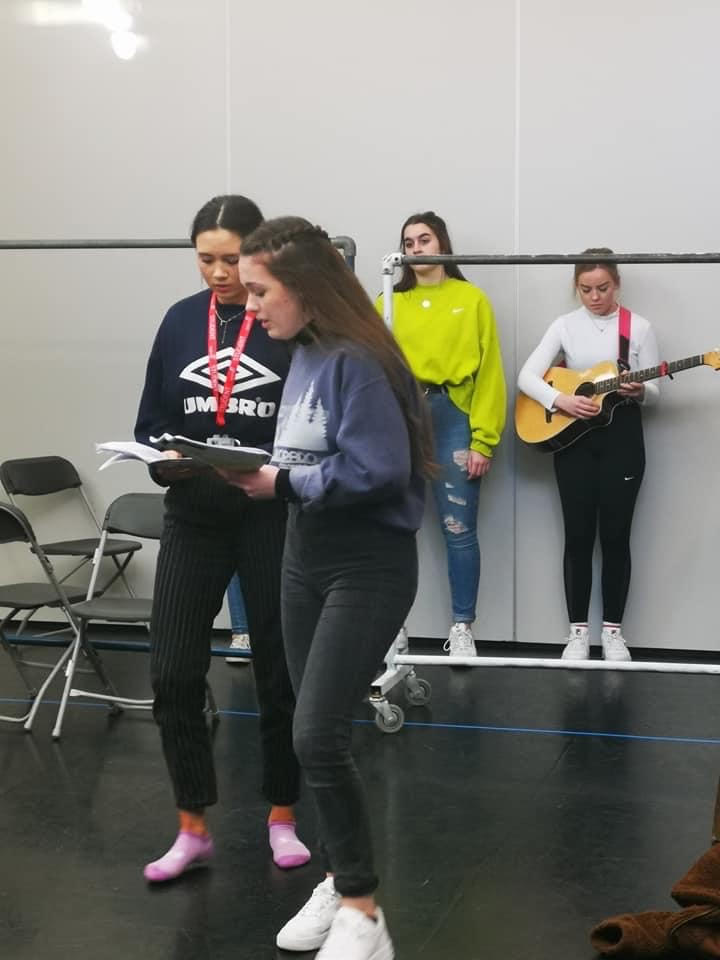
When I was thinking about our view on the ‘do I bury the body’ situation, I could see that the sisters represent 2 very different but equally important views. It is the HEAD and HEART speaking about the same thing but with opposing perspectives. Ismene as the head thinker is rational. Antigone the heart thinker is passionate.
ISMENE the HEAD; ” We are the last ones left sister and what death is promised for us. More terrible than any if we break the law.”
ANTIGONE the HEART; ” I won’t betray him now that he’s dead. No one will ever throw that in my face.”
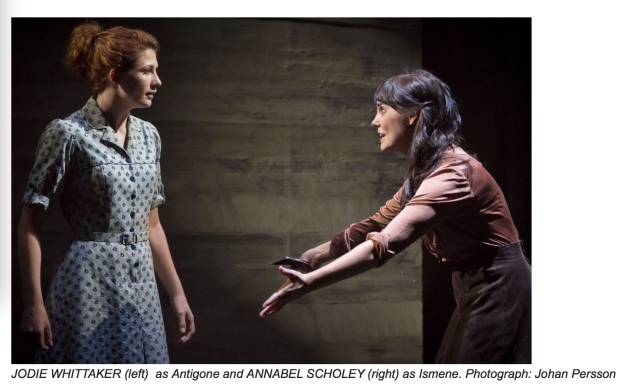
Voice
I had a challenge to work on the pitch of my voice because to begin with I was delivering the emotional words in a high register all the time. I think that when I/Ismene got fired up about the situation then my voice would rise. Lauren gave me feedback about lowering the pitch of my voice and trying to still be as emotional but keeping the register lower. She also helped me to find more variety with a range of strengths and levels in my voice. At first I was delivering the emotional speeches on one level which gets too samey to listen to. I had to find space and variety in my rhythm and pitch.
Ella was also looking for variety with her speech delivery. She was very strong but needed to find places to pull back and not be at number 10. We worked by helping each other out offering feedback as to when speech could be tweeked and given a different quality.
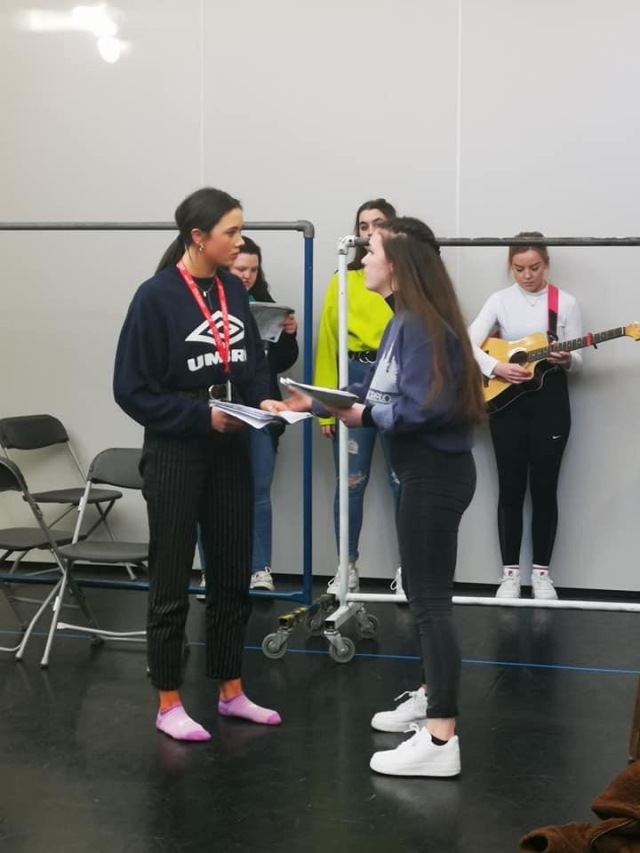
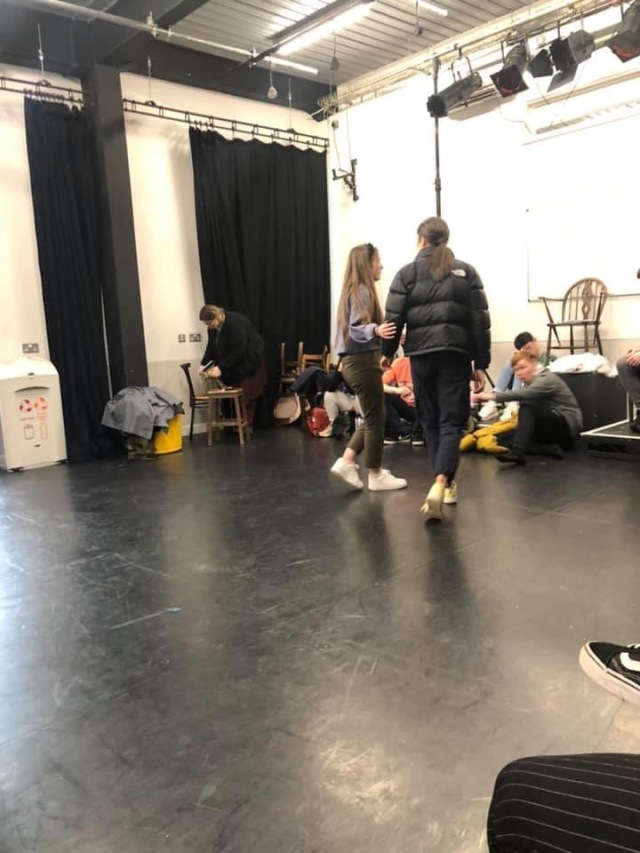
Costume
The whole piece has an industrial feel. We have spoken about visual references like the Hunger Games which then dictates our costume choices. Creon, the King, will wear a suit, Haemon will wear an army outfit and a suit. This shows he is ‘at one with the people’ and also a King. The chorus wear military clothing. Ella and I are wearing industrial street wear. The overall design means that we are pretty much wearing monotone, not bright colours like the set.
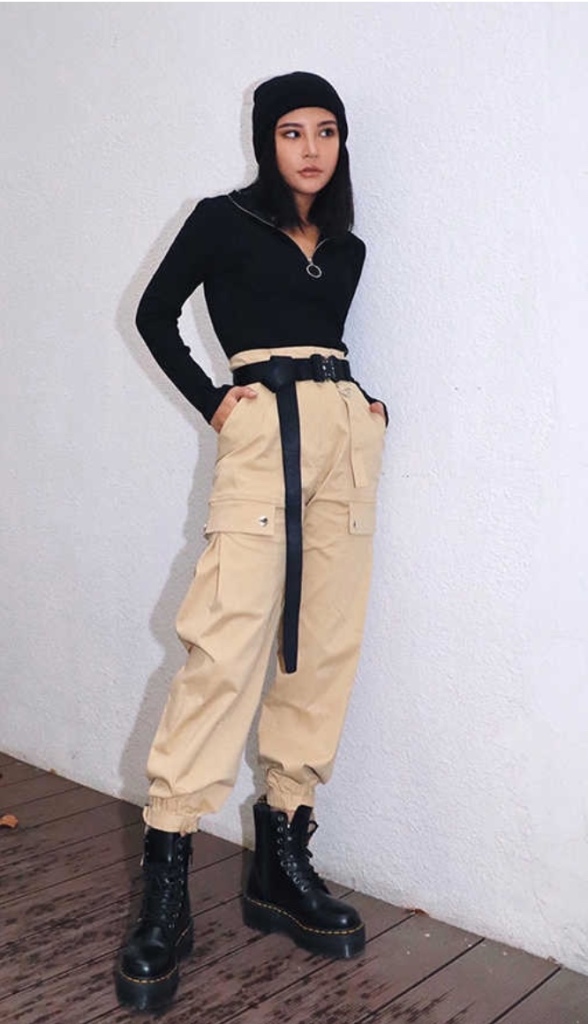
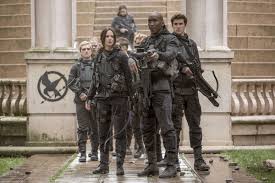
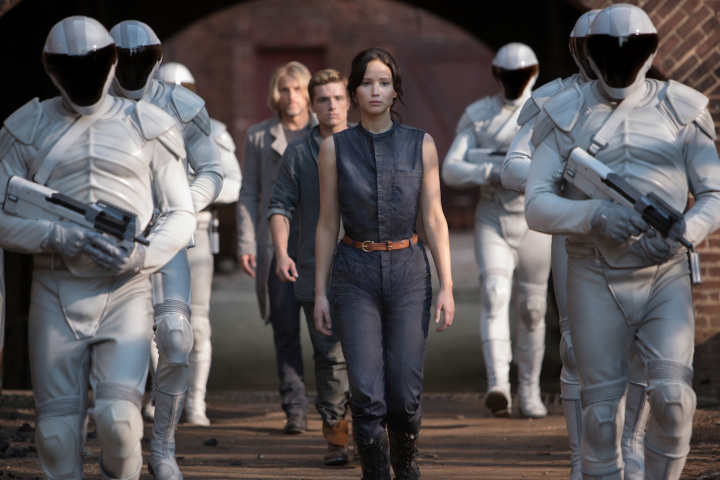
My choice of costume makes me feel grounded and alive on stage. It gives me energy as I feel bold and striking in the ‘tough’ look that the combat pants give. I really like wearing the Doc Marten boots as they encourage me to have a strong stance and presence that helps me to deliver Ismene as a bold and clear, even if gentle, person.
Comparison to other fictional characters
I have done some research and thinking about sisters in other plays, films and stories and where I can find similarities with the relationship betwen me and Antigone.
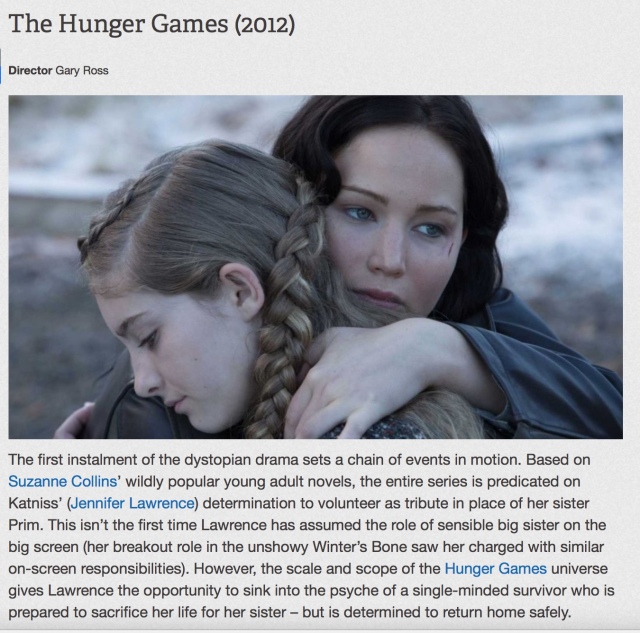
The most striking similarity I can find are the characters of Katniss and her younger sister Prim from the Hunger Games. Katniss is bold, brave and passionate and takes the place of her younger sister Prim who is more gentle, nervous and more naive. Katniss does this to protect her sister. Although they are very different, Katniss and Prim are still very close, like Antigone and Ismene.
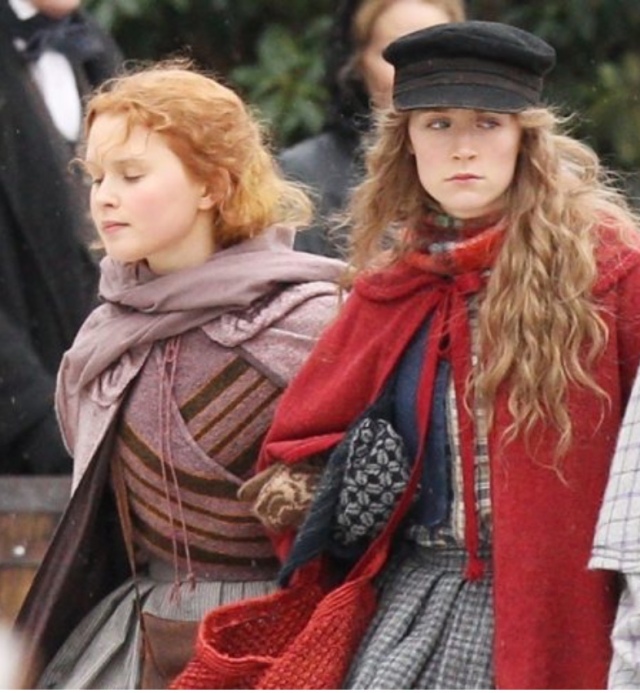
There are 4 sisters in Little Women by Louisa May Alcott and each have very different characters. There is Meg the eldest and most sensible, Jo the passionate writer, Beth the vain and romantic and Amy the youngest, thoughtful and musical. I see Antigone as being like Jo and Ismene as Amy. The 2 sisters are very different in personality but are very loyal and close.
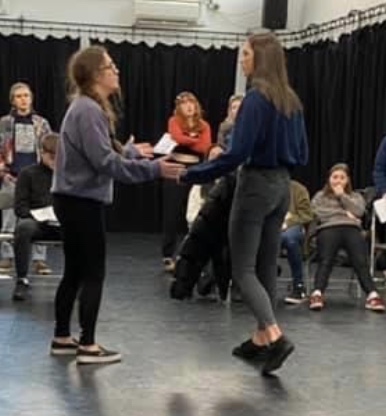
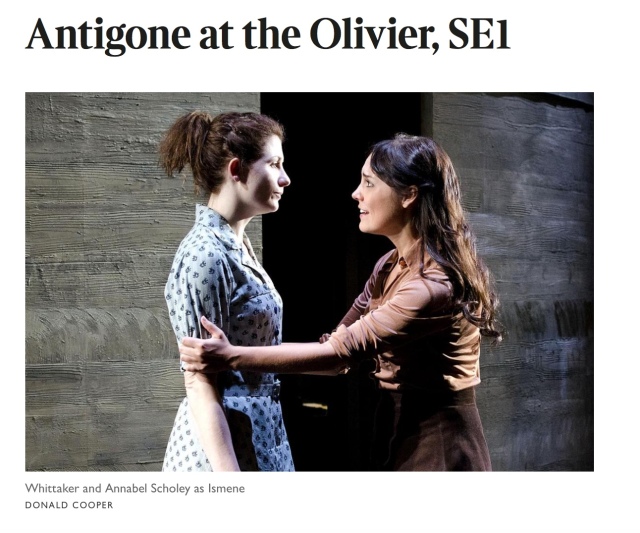
Acting Principles;
Within the process of becoming Ismene I have thought about the techniques we have been studying within acting and Uta Hagan and Stanislavski.
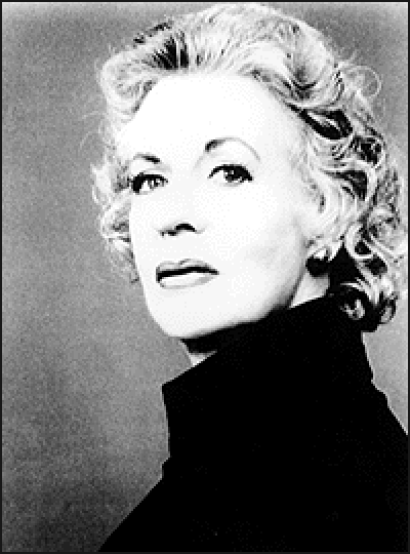
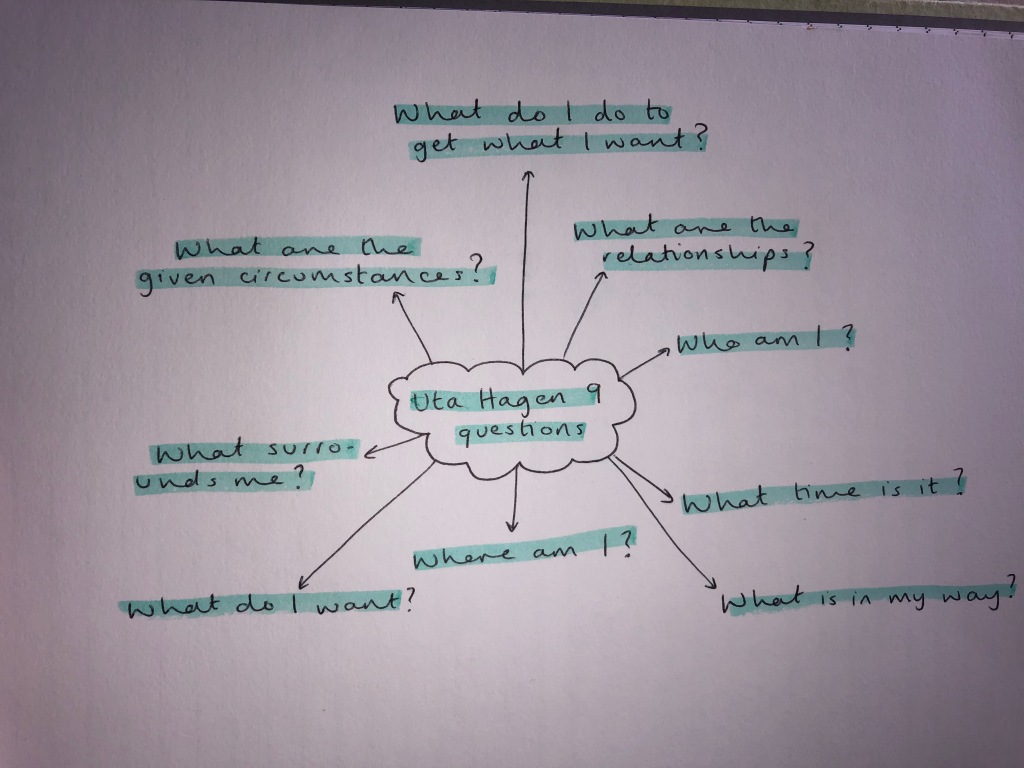
These 9 questions are a way of having a deeper understanding of your character so that you can have more depth and understanding of them which you should then bring to your performance. It’s like understanding their back story so that there is a truth to them. I looked at all of the 9 questions and answered them as Ismene in this way;
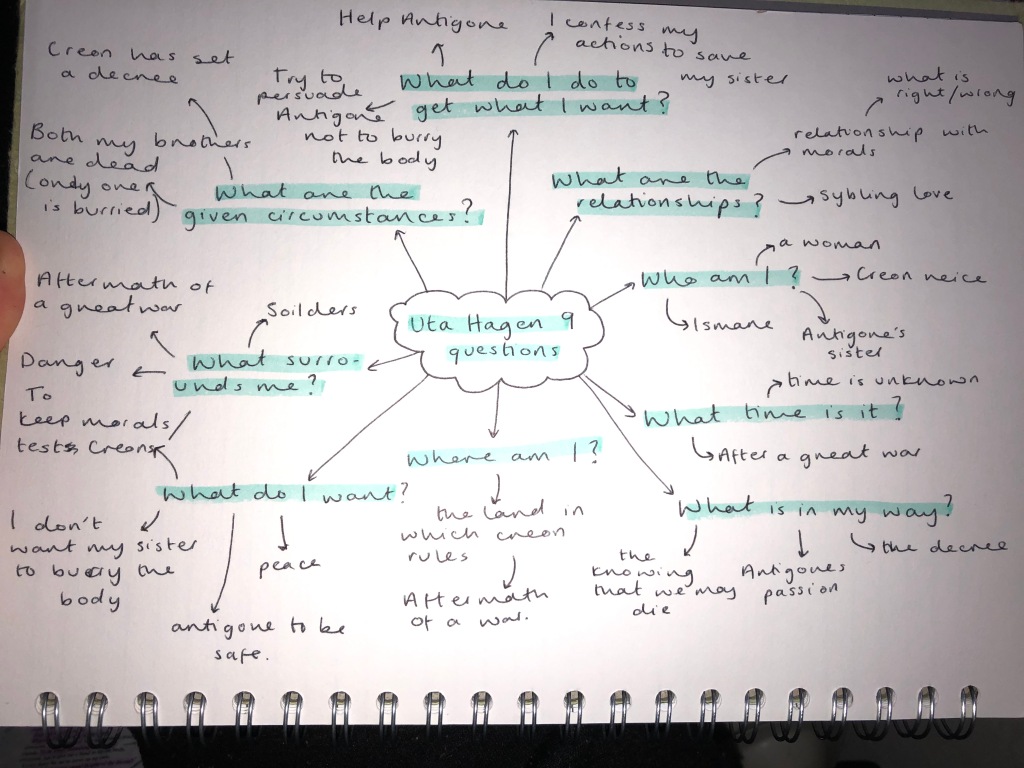
I found this process really helpful for example, answering ” Who am I ” I reminded myself that I am Antigone’s younger sister, niece to the King and a woman in society. Asking “What do I want’ was good because it made me see that I DON’T want my sister to go against the King’s decree but I raelly DO want my brother to be buried so this made me see the conflict in myself.
Stanislavski was a Russian actor and Director who developed a naturalistric approach called method acting.
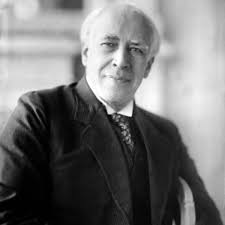
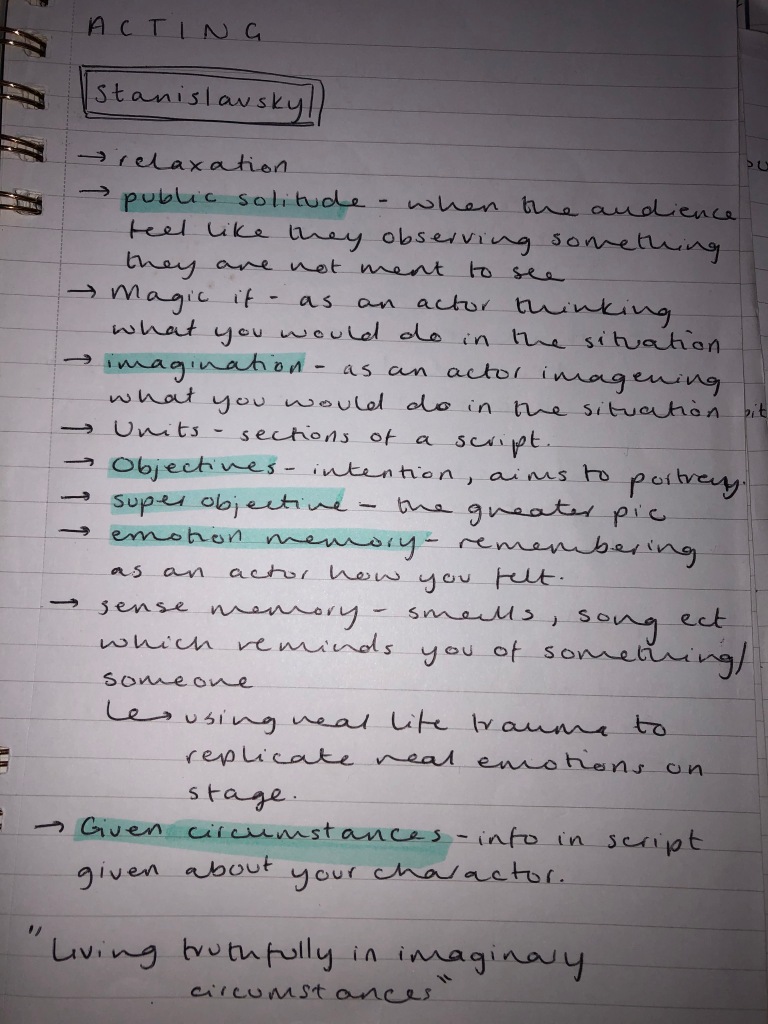
Emotion memory
I thought back to times that I had to really try and persuade someone of something in my life and how this made me feel.
Public Solitude
Me and Ella create a Public Solitude in our first scene by having an intimate discussion that the audience feels like they should not be hearing. I like the tension this creates.
Imagination
I really like the Hiunger Games Trilogy and have watched it a lot so I used this as a resource for my imagination. I thought about the scenes of danger and angst that the sisters shared to try and connect with the deep emotion and disagreement between the sisters.
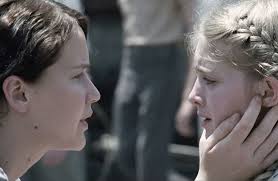
MUSIC
Lauren has chosen the music to be used for our Antigone performance. It is a mixture of recorded music that serves a backing purpose and live vocal singing that the on stage performers do throughoput the piece.
Backing music
The main atmosphere of the chosen tracks is dark industrial. There is music playing under most of the scenes when we are performing which then gets more pronounced and louder between the scenes are we are moving. The speakers are able to get the sound level pretty high which makes it very strong. During the rehearsal process we have been trying out different tracks to see which fitted the best and as we are now nearing the performance choices are being made.



Vocal work
The fates are on stage all of the time. They are 3 ‘witches’ who observe, predict and analyse the action. They are not part of the chorus. The fates speak but their singing is a repetitive theme which brings a recurring song to the play. It is haunting and atmospheric.
The chorus sing as a large group and usually do this to enhance and support when the fates are singing. The lead characters do not join in the singing as we need to stand aside from the ‘commenting on the action’. We are inside the action, not standing outside of the action.



Here are some examples of the songs that the Fates and the Chorus sing throughout our performance. The chorus take up the whole space and often frame the action whilst singing which is really powerful.
Lucy, Eve and Mia play the Fates;

PROJECTIONS
The tech students spent time during rehearsals taking members of the cast – Creon and the 3 Fates- and filmed them up close with head shots. They were not speaking but they were asked to move in a way that suggests looking or observing.

The filmed footage has been compiled to become the large projections that appear during the show. The screens on the real set are positioned high up above the set at one end. The projections work well as they add another layer to the show. They are a device to give more presence and power to Creon and also the Fates. The projected images have effects on them so that they look intimidating. The Fates are always projected as the 3 of them which gives them a God like presence of over seeing the world below.

The projections work really well I think for our production because they emphasise the post industrial feel that the show has.
As a performer I like having the projections as part of the show because we can refer to them. For example in the first scene Antigone says to Ismene,” What a great King our Creon is” and she gestures up to the large scale head above.
LIGHTING


The set and the costumes are monotone so the only colour in the performance come from the lighting which as you can see gives strong washes of red, blues, oranges and pinks. The lighting is set both high level and low down so there are many shadows cast which creates atmosphere.


Here you can see that there are small spot lights attached directly to his thrown which gives a bright light to his face from underneath. This emphasises his status.
During the last week of term before we had to end early due to Covid 19 lockdown, we managed to get our first technical rehearsal done . Although we had seen the set being built and the lighting and special effects planned, it was the first time that the performers had been present on the set at all. We had been rehearsing our performances on a mock set in the Wildman studios up until this point. This Technical rehearsal was planned to cover 2 days but with the lockdown suddenly happening we didn’t complete both.
The purpose of the Technical rehearsal was;
All 3 key areas mentioned above are essential and must work seamlessly together in order to present a high quality, smooth and safe production.
In my view, the show is ambitious in that it is quite technical with a heavy use of sound, lighting states and complex set design. This makes the piece impressive and exciting but also means that the actors have a lot to consider as do the technical students. It is also quite a fast paced show with 4 entrance/ exit points that require a lot of backstage movement. I think the success of the piece will partly depend on hitting our Q’s and our entrances on time. This, potentially, means that the performance and set has a slightly higher level of risk ( Health and Safety) than a simpler staging which is not in the round.

It was essential that everyone was present for this briefing. We took notes on everything that was said, she pointed out physical areas that she was refering to and then asked us to walk around to take a look at what she had been briefing us with. Although there was lots to consider, having had an explore around the set we could see how well the performance would sit on this design.


RISKS TO CONSIDER;
The set design had got rid of all curtains and also has reversed the layout of the Box Theatre in a way that we had never done before so the space feels very different. The backstage walkways are narrow, dark, some have hazards such as lights set on the floor that could be trip hazards as well as wall mounted objects such as fire alarms that stick out into the space. With the removal of the curtains we are physically very close to the audience when moving around the backstage walkways in the dark so we have to be very careful as well as silent. There is quite a high risk of tripping or banging heads.
The tech team have also had to completely rethink their operations because they do not have the normal tech desk available to them because of this new layout. They have had to set up tables to work from but this means there are far more cables running around and across the backstage thoroughfares than normal. They are taped down but a slight hazard.
I can see that there has to be a tight plan/ choreography of all the performers backstage in order to move around the back of the set efficiently and quietly. It will not work if 2 actors need to pass in the narrow walkways so we need to anticipate flow of entrances and exits. We need to be efficient but not rush. Rushing is when there can be accidents.
Higher risk dangers that Becca pointed out are; to be aware that the ground based lights that are in easy reach get very hot and will burn, never to run behind set as there are many physical objects that we could bang heads on and also to be vigilant around the fact that we have a noose on set for the show that must not ever be handled by the wrong person. Also, along these lines, we are using fake guns in the show which must always be stored locked away and not taken off set by anyone. Once used on stage the gun must be put back in its proper prop place for the technical students to take charge of.

I have done some further research online about Health and Safety in performance. Actsafe is a not-for-profit health and safety association supporting British Columbia’s arts and entertainment industries since 1998. It has some useful checklists to consider for live performance;
Safety Inspections
All areas of the workplace are to be regularly inspected to identify hazards, which must then be eliminated or controlled. Inspection is an ongoing task because the workplace is constantly changing. Both venue and production-related items should be inspected thoroughly, for example:
• emergency equipment and exit routes
• backstage lighting
• tripping hazards
• platforms and stairs
• flown items
• electrics
• crew work practices
It is important to make health and safety a regular topic at production meetings.
What I have learnt by reading this is that Health and Safety is an ongoing matter and although you have done a Risk Assessment at the start it doesn’t mean that the subject is finished. In live performance it is important to regularly check and review issues such as electrics, trip hazards, safety of platforms etc.
There is also really useful stuff on their website about reviewing an accident if there should ever be one;
Conducting an Accident Investigation
• Determine the cause or causes of the accident
• Identify any unsafe conditions, acts, or procedures that contributed to the accident
• Find ways to prevent similar accidents
• Document the investigation
Interview witnesses and people involved in the accident or incident — even if the person wasn’t present at the accident or incident. For example, it may be appropriate to interview a trainer who instructed the workers involved, months earlier.
Your investigation should determine: WHO was involved or injured? WHERE did the accident happen? WHEN did it occur?
WHAT were the immediate and basic causes? WHY was the unsafe act or condition allowed? HOW can a similar accident be prevented?

So far, in terms of the technical rehearsal we achieved before lockdown I have not personally met any problems with how I am performing on the set. So far, I can see that the lighting levels and sound have been what I have expected so this has not been too challenging for how I am playing the role. I think this seems to be the same opinion for all of the performers who are excited by the set rather than frustrated by any technical challenges.
One new benefit from being on the real set is that we are getting a very clear appreciation of working 360 degrees in the round. Having to move behind the scenes from an exit to a new entrance for example makes me appreciate the total space in the auditorium. Having been rehearsing on the mock set, where we have just walked across set to our next entrance, dodging actors on stage, was obviously temporary so this never really felt like a true experience of being in the round. Now on the real set we can see how this works and flows as it should.
I can see that because the tech team have had their design decisions made early on and for most of the process this has really helped. We have been working with their set design and rehearsing to their requirements of staging and so everything is now fitting together really well. I can see that if in a production the set decisions are late in the process or if the set decisions keep changing then the actors would get frustrated and confused and then the company would not be so ready as I think we are at this stage in the process. We have still to run and improve the show but we have not hit any major issues.

Being in the set with all of the technical elements made me feel really engaged with the story and my role. The technical aspects really heighten the atmosphere and so make playing the scenes with strong emotions is easier. I can see that the final elements of costume, hair and make up will really complete this total atmosphere and will hopefully allow me to really deliver a good and powerful Ismene.
Although I have really enjoyed being cast in a named role and this a been a massive learning curve for me I have also really enjoyed being able to be part of the devising process for the play as a whole. For example, sitting outside of the action and contributing to the physical theatre chorus scenes.
The chorus have many physical theatre scenes in the show that punctuate the story. For our production of Antigone we have the same chorus cast performing for both shows. We have 2 lead character casts. This means that the chorus gets lots of rehearsal time and will perform every show. ( The role of the chorus in a Greek tragedy is talked about in an earlier blog).

At the very start of the Antigone process the chorus were struggling in a few different ways; to find a unity and common physical language, to understand who they were as a group of characters and what role they had in the story. Also, finding energy as a group was lacking and the chorus was dull so it wasn’t initially a very strong element of our production.
Progressively, over the time of our rehearsal period they became more connected with each other and also with the role of the chorus in the play. I think also they got more excited about being in the chorus and seeing the importance of the chorus to the whole piece and became energised by this. All chorus members got more vocal in offering ideas and devising with the company as a whole.

Physical theatre is anything that puts the human body at the centre of the storytelling process. As a result it’s often abstract in style, using movement in a stylised and representational way. With the expression of ideas choreographed through movement, such performers may use very little or no dialogue at all.
BBC bitesize says; DV8 are arguably among the main practitioners of Physical theatre as a ‘full’ art form. They focus on looking at the dramatic potential that can be unlocked from movement. Their work is often described as existing at a crossroads where dance, sound and drama meet. DV8 are well known for using Physical theatre to explore complex aspects of human relationships and social or cultural issues.
Complicite are also a reknowned Physical Theatre Company;


The Knotted Project had been in, earlier in the process and worked with us all ( which I have blogged about earlier) and so the chorus had to really think back to how the Knotted Project’s experience and skills had massively energised and improved our performance that day.
We all thought back to that workshop with The Knotted Project and remembered the very specific physical techniques we explored that day. The lift I have shown above was something taked directly from the workshop day. Other things we refered back to and tried to incorporate into our production with the chorus work were specifically how to direct focus. For example, if the chorus stood in a clump and took a step to the right with one person taking a step to the left it shows a division and all focus shifts to the person on the left. When we thought back to the Knotted Project workshop it gave us a renewed confident to be more experimental, creative and bold with our choices around the chorus work.
Our chorus is not just physical though as they are constantly using voice in scripted lines delivered as single voices in quick succession, group unison dialogue and also singing in a gospel, choral style using traditional and folk tunes. When they start singing it is very powerful and what it adds to the play is amazing. There is a strength in the group voices and they create an enhanced atmosphere immediately. As an actor it really helps me to feel connected to the whole and it draws my emotions to a higher level which I think means I perform more effectively.
Although I am not in the chorus I have had moments along the devising process where I have helped to input, for example, on devising Antigone’s death scene me and Ellie ( who plays Ismene in the other cast) worked with the chorus to create a physical choreography which involved the lift you see above. We had to work on where the most strength was needed to hold weight, how to create smooth physical transitions, timing, audience sight lines and so on. She is lifted, the group do a half turn and then place her back down.

Working in the round, in a chorus, is a challenge to get right so that the audience are not visually blocked too badly. Being a solo performer is a challenge in the round but the mass body of the chorus is even more complex. They have to consider, when on stage, that their mass group might be blocking the sight lines of a lead character who is delivering a key line for example. Like all of the chorus work, their physical vocabulary seemed to get better and more fluid as our process progressed and unfolded. Now, the chorus are physically more fluid and are really good at giving variety to their levels. I think it is very successful when the whole chorus work together but spread the focus out to all sides of the audience and work the round as a whole.
Scene 5 is a powerful section of the play. It is the scene where Antigone and Ismene are sentenced to death by Creon. The scene begins with an encounter between Antigone and Creon where he is intimidating Antigone. isn response to her criminal act of burying her brothers body against Creon’s wishes.

Ismene enters the scene via a soldier bringing her in. She is already emotional, looking as if she has been crying. Creon has demanded that Ismene be brought before him and so I am dragged onto stage by Billy who is playing the soldier. I have to enter this scene in an emotionally upset way so I feel that I enter looking vulnerable and adding tension to the scene. Immediately Creon confronts Ismene in the same way that he has been treating Antigone; ” And you! Snake!” he says, ” Slithering silently about my house to drink my blood in secret!” This scene has been great to explore because there is so much heightened emotion and anger between the characters. At first we were mostly doing this with voice and reactions but as the rehearsals developed we have added physical actions and details that maje the scene really powerful. Such as; adding , on the line “in secret”, Creon pulls out a gun and holds it to my head. This moment achieves many things; the audience are in suspense at the violent action, it plays with Antigone’s mind and sends her into a panic. Ismene is paralysed with fear and it makes Creon appear totally powerful and terrifying.
Ismene is challenged by Creon, whilst holding the gun to her head, to admit she was involved. I confess immediately, demonstrating my loyalty to Antigone. It is an emotionally complex scene thoughout because the whole time Antigone is trying to take all of the blame. The two sisters are continuing their argument about who should die for the crime with Antigone insisting that Ismene should not. Ismene’s love for her sister means that she wants to stand with her in death. Creon stands aside from this argument and mocks the two sisters as lunatics. He remains in a powerful position but we look weak as we argue infront of him. He is laughing at us really.

The delivery of the lines in the section above ( the sisters’ argument) is fast paced. There is tension in the scene because we are under arrest whilst arguing in this way. We are not free to move around as if the argument were private between us. At first in the scene we are fairly far apart on the stage. I am on my knees, having been thrown down by the soldier. Antigone is stading, keeping her distance. As the pleading continues from me I stand and come towards Antigone and even manage to grasp her but she immediately rejects me and walks away on the line, “Ask Creon to protect you.” This rejection changes my mood. I get more cross with her, “Do I deserve such contempt? Do you enjoy making fun of me, sneering at my misery”

I find this section really satisfying to play because there is so much emotion to push against. Ella is delivering a powerful rejection of me, being cold hearted, and so I am able to really respond with both pain and anger. The more this scene was rehearsed the more pace we could give it. It became very clear that we had to be totally on top of our lines in order to really inhabit the emotion and give it movement. Before we were at this stage the argument felt weak because we were not truthfully responding in the moment.

Towards the end of this scene it is clear that however much Ismene or Antigone challenge Creon and the situation, Creon remains in power and the women are unable to change anything. When I say, ” Anyone would crack, The most tough- minded person, under such treatment.” I am standing up to Creon and telling a truth about morals, behaviour and power. I feel strong at this moment. What I like about this line is that I say, ” The most tough-minded person” not woman. I see that Ismene and Antigone, although women and sisters, are not concerned about being female. They are concerned about being people with a strong ethical position. This is not the case for Creon though.

This line makes it clear that Creon is bothered that they are women, not people, and I think that is because he is secretly threatened by their innate power and moral standing. He needs to diminish and patronise them, put them ‘in their place’ in order to keep hold of his power. This patriarchal power dynamic of male leaders diminishing the capabilities of women in leadership is very present in todays Global politics. Donald Trump is a prime example of a male leader who has no genuine respect for women in power and in fact he maintains his position of power, not through good leadership or intelligence but through bullying and threats, exactly like Creon.
BBC News online says:

With a number of women running to take on President Donald Trump in the 2020 election, the president’s language about his opponents will undoubtedly be a recurring issue. But is there really a gender difference to his attacks?
In an interview, Mr Trump referred to career diplomat Marie Yovanovitch, the former ambassador to Ukraine, not by name, but as “the woman”.
Professor Marianne LaFrance, a psychologist at Yale University, says this remark is a prime example of gendered language.
“That referencing says she’s not an individual, she’s not a professional, she’s first and foremost a woman,” Prof LaFrance says.
https://www.bbc.co.uk/news/world-us-canada-50563106

This scene up until this moment has been a very intense 3 character scene with a lot of dialogue and a lot of tension. This moment now works really well to change that mood and with the chorus moving right through the centre of the stage they feel like a new energy, or a big dynamic shift, that I think the audience need at this point.
The main purpose of today was to find techniques in how to deliver the Antigone speech making it sound natural. Here are the excercises we did to put this into practice:
Personally, I found this task really helpful. It gave me some technique as to how to deliver the speech that I was unfamiliar with and also helped give rhythm so it had some depth and was more interesting to listen to.
2.Secondly we found a space around the room balancing the space, and walked with purpose to another person while delivering a small section of the speech. This was mainly to focus on energy and how we can pass energy between people, as well as keeping the energy rolling and alive.
I really liked this exercise because you not only had to consider how you moved and directed your energy to another person but you also had to receive energy from others and carry that into your own performance. To really enter into this exercise I could see that you had to allow the Stanislavski technique of ‘relaxation’ tobe present. If this happens then it means you are really present/ in the moment and so you can genuinly receive any energy coming your way rather than anticipating and making it seem forced.
3.Next we did an exercise where two people run at each other from across the space and collide in the middle. From that impact one person delivers a line without thinking just reacting to the collision. This was a way for us to explore physical impulse and impact to exploit the intention of the line as well as anchoring onto someone.
I found this to be a brilliant technique because it takes away any preconceptions or over planning of the delivery of the line as it comes out of you in a natural impulse which I can see is much more interesting for the audience. This can then create a more genuine and dramatic scene.
4. Another way we explored anchoring was individually delivering a line while pushing into a chair or wall to see how physicality can change the way we deliver the line. Looking at the weight and strength behind the line.
This technique made me feel grounded and also I think it helped with making me deliver the line more naturally because I was busy with the physical task which meant I didn’t think too much about the words.
According to classicamusic ‘‘anchoring’ is a long held technique to help you ‘anchor’ your body into different positions when achieving a particularly difficult note. ‘ This is talking in terms of singing however I think this technique can easily transfer across to acting as how you vocally deliver a speech is very important.
During my research on ‘anchoring’ I looked for examples of actors using this method to deliver their text. Below are examples from National Theatre; https://www.nationaltheatre.org.uk/?queueittoken=e_safetyevent9apr20~q_00000000-0000-0000-0000-000000000000~ts_1586707257~ce_true~rt_afterevent~h_713f02ccdba4856e30c999606b619d1a3606c56525e29517cccc908a721d07b4



I found today’s lesson really useful. It is good to see how quite simple techniques can really help me with my acting.